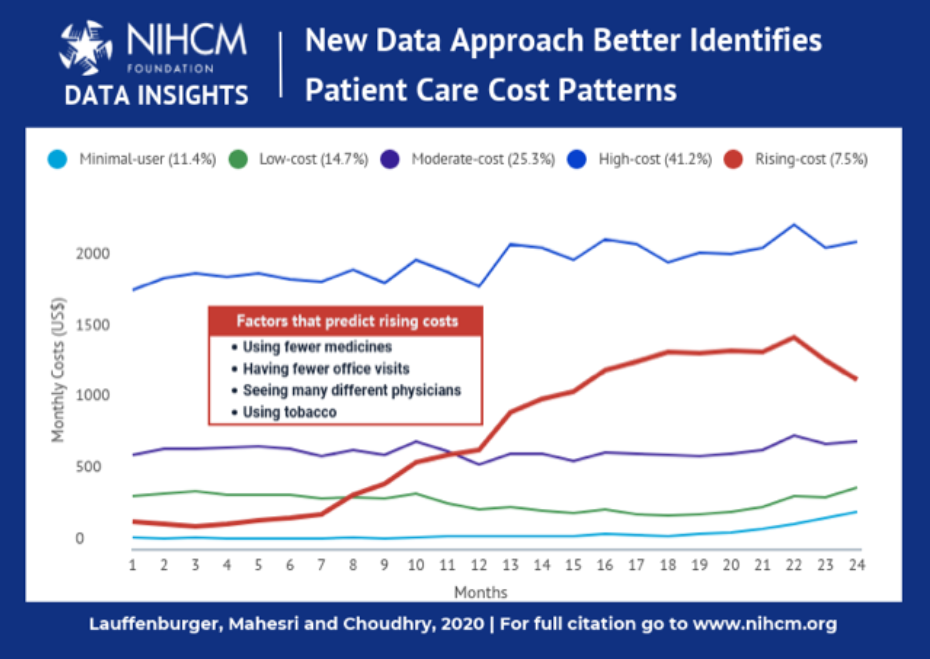November 19, 2020
Analysis of Patient Spending Points to Interventions that May Prevent Rising Care Costs - New Research Insights

Understanding which patients are likely to see their health care costs increase quickly over time, and why, is key to managing health care spending. While most cost prediction methods focus on assessing aggregate spending over a short time, a research team led by Julie Lauffenburger, PhD, an assistant professor of Medicine at Harvard Medical School, found that using trajectory modeling to assess spending over a period of two years produced more accurate predictions. The researchers found that:
- Over this longer time horizon, five distinct spending patterns were clear—patients with consistently minimal, low, moderate, or high costs and patients whose initially low costs rose significantly over the period.
- Compared to other patients who also had initially modest costs, patients in the rising care cost group used fewer medications, had fewer office visits, saw many different doctors and used tobacco.
This innovative use of data may not only help health care providers and health plans better identify patients expected to incur rising care costs, the method also provides insight on how to improve care for those patients. Ensuring that at-risk patients receive more integrated care, including support for adherence to medication regimens and coordinating physician visits, may produce better health outcomes for patients and lower costs for providers.
